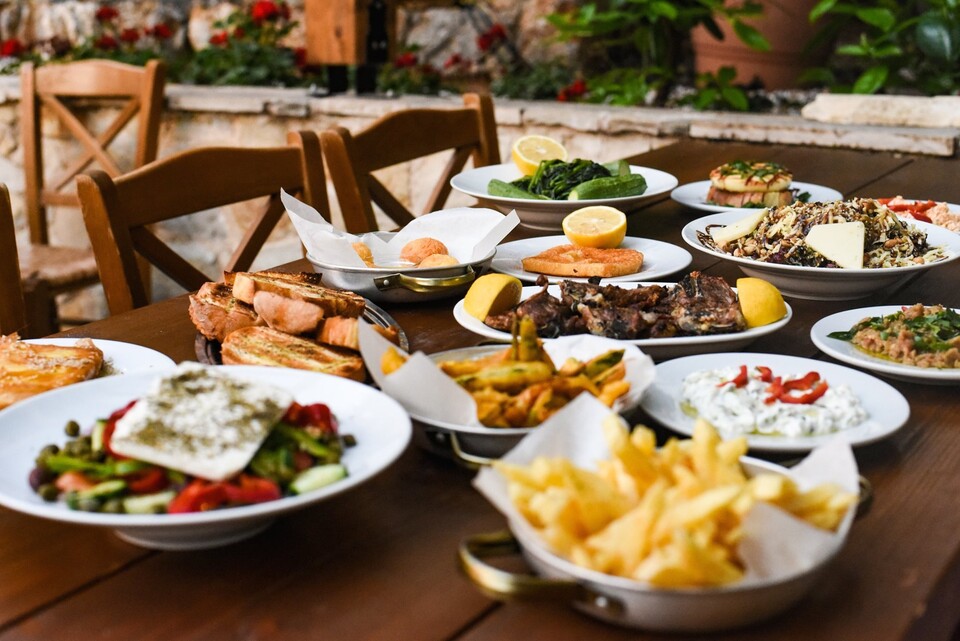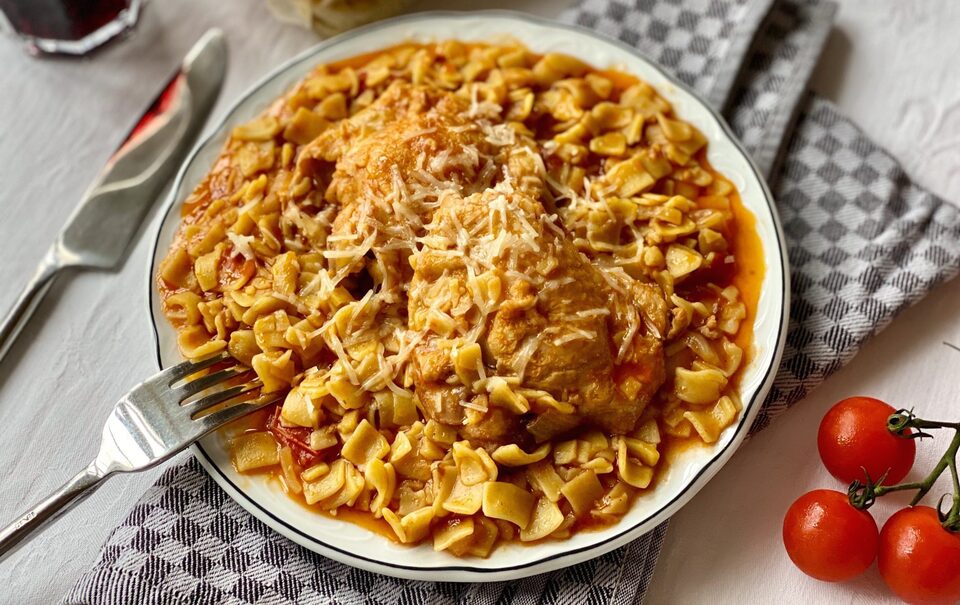Five traditional Peloponnese dishes you need to try
Gastronomy
Five traditional Peloponnese dishes you need to try
Written by Scuba Turtles | 13 May 2023


The Peloponnese is known for being a diverse and historically rich destination, full of historic sites and breathtaking scenery. Gastronomy is also a big chapter with many Peloponnese dishes you shouldn’t miss.
This is an especially fertile land, well known for its generous yields of innumerable goods. It’s a food paradise, particularly if you adore extra-virgin olive oil, honey and seasonal products like citrus fruit, tomatoes, or watermelons.
Food is one of the most essential parts of traveling and exploring new cultures. Let us introduce you to our favorite dishes which you should not miss during your visit of the Peloponnese.
1. Gourounopoula
Traditional Messinian delicacy gournopoula or gourounopoula is especially popular in Kalamata. The dish consists of a spit-roasted piglet. The piglet is placed on a spit, and a mixture of salt and oregano is sprinkled on its belly. This method of cooking makes the meat more mellow, tender, and juicy, as the heat breaks down the fat and tissues. Ten hours of high heat also cause the skin to caramelize and become crispy, adding a depth of flavor to the meat.
The dish dates back to the times of Turkish occupation. Due to religion, the Turks will not eat pigs. This led to a huge population increase, which caused them to become a major source of food for people in the region. As a result, pork dishes became a staple of local cuisine.


2. Hylopites
These small, square-cut handmade pastas are a popular local product in the Peloponnese, also known by the regional name of τουτουμάκια (toutoumákia). Made with eggs, milk and whole-wheat flour, hylopites are a dried pasta. The pasta is traditionally made by rolling the dough out into a thin sheet, dusting with flour, and slicing twice: first into thin strips, then into small squares.
Typically, in village kitchens, they are served boiled, topped with olive oil and Myzithra, a cheese made by combining goat’s or sheep’s milk with whey. Hylopites are also used in soup and stew recipes, like chicken pasta soups and baked chicken with red sauce.


3. Kagianas
The flavorful Greek version of scrambled eggs is made with plenty of grated fresh tomatoes, and it has several variations, including versions with added cheese or syglino (cured meat). The tomatoes add a fresh, acidic flavor to the eggs and balance out the saltiness of the syglino or cheese. The texture of the eggs is also improved by the addition of tomatoes, as they help create a light, fluffy consistency.
In the Peloponnese, where it is particularly common, it’s known as kagianas, from the Turkish word “kaygana” which derives from the Persian word خاگینه khâgine, which means omelet. In the rest of the country, it’s typically called “strapatsada,” which stems from the Italian strapazzare, meaning scrambled.
It is usually served as a side dish or an appetizer and is ideal to accompany grilled meat dishes. It is also eaten at breakfast.


4. Petoules
Petoules are Greek fluffy pancakes that originate in Messinia and are found in many villages under different names (lalaggides, lalaggia, lalaggopsomata or psomakia). They differ slightly in size or shape, but their common element is that every family cooks them with freshly harvested olive oil. Making the dough is very simple, since only a few ingredients are required: a mix of flour, milk, butter, eggs, baking powder, and salt. Remember the most critical ingredient… love! After both sides are golden brown, they’re served as salty snacks, usually topped with cheese and honey.
Traditionally, Petoules were baked over a fire on the Sunday preceding Ash Monday.


5. Diples
This delicious dessert consists of thinly rolled-out dough, fried and topped with syrup flavored with honey, cinnamon and chopped nuts.
The word Diples comes from the Greek word “diplono” (δι-πλώ-νω) which means folding. They are named this way because the dough is folded while it is fried.
The tradition of giving Diples at weddings is said to have originated in the Peloponnese. In those days, it was believed that the more folds in the Diples, the more luck the newlyweds would receive. The tradition has been passed down through generations and is still practiced in Greece today. You’ll also find them in bakeries and pastry shops all around the country.










